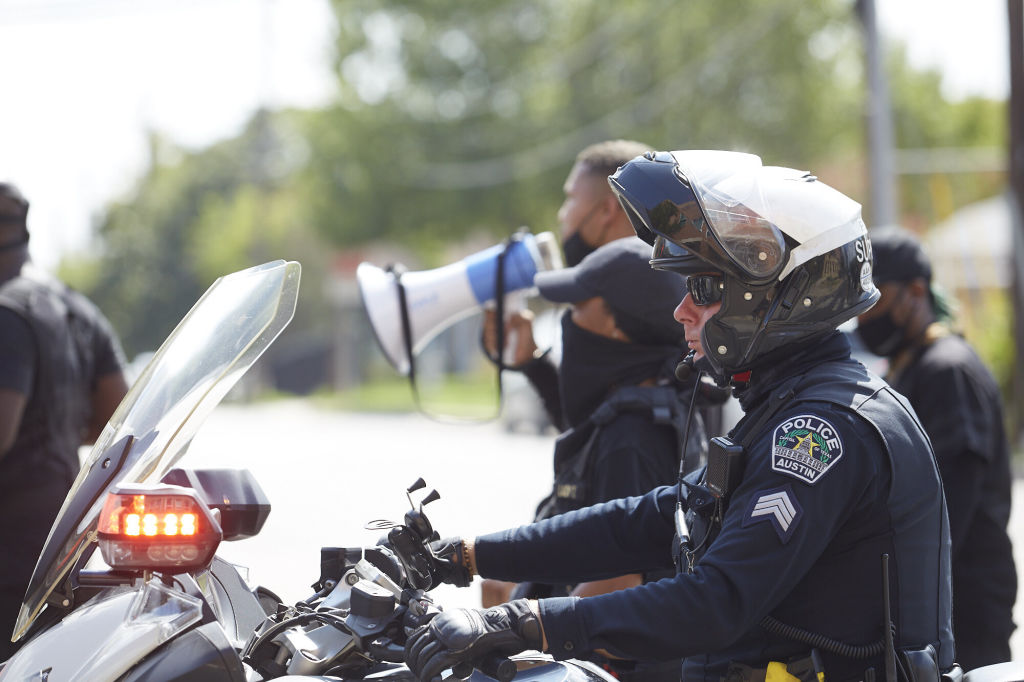Right now, Austin voters are weighing in on one of the most consequential local elections in recent Texas memory. The byproduct of Back the Blue–inspired efforts by Save Austin Now — a right-wing group infamous for fear-mongering and spreading misinformation — Prop A is a ballot initiative that would boost the Austin Police Department’s (APD) already-massive budget by hundreds of millions of dollars over the next several years. If passed, the proposition wouldn’t just syphon money away from critical city services like the fire department, EMS, and parks: It would set the table for similar efforts elsewhere in the state.
To date, more than 100 organizations and associations have come out against Prop A. This broad coalition’s opposition to Save Austin Now’s campaign is grounded in the belief that there is far more to public safety than policing. (Check out the Signal’s full write-up on Prop A for more on this.)
But for some within the movement, especially those in the criminal justice advocacy space, APD’s lack of transparency, penchant for cronyism, and recent string of race-fueled scandals must be considered here, too. It’s a legitimate question: Does this department, which already secured its biggest budget of all-time in August, really deserve millions more in funding? Below, we run through some of the most explosive — and concerning — APD controversies over the past few years.
Oct. 2019: Assistant Chief Justin Newsom abruptly retires after years of racist comments surface
APD was embroiled in scandal two years ago when Assistant Chief Justin Newsom was exposed for his disturbingly racist behavior. According to anonymous complaints filed with the city, Newsom openly used the N-word while in the office and around fellow officers for years, including when referring to former City Council Member Ora Houston, former Assistant Chief Frank Dixon (who now leads Denton’s police department), and President Barack Obama.
These revelations were (and still are) so damning because Newsom apparently received zero pushback from the supervisors and subordinates who witnessed his behavior — including former Police Chief Brian Manley and other members of APD’s top brass. Past reporting by the Austin American-Statesman indicates that, upon learning about the existence of screenshotted text messages containing racist statements by Newsom, Manley “agreed to keep it a secret as long as it did not come out… for the good of the department.”
Although these findings ultimately surfaced, Newsom was never fired. Instead, he was allowed to retire with a full pension and $137,000 in cashed-in sick time — a cushy departure that, according to a subsequent investigation, wouldn’t have been possible without Manley’s assistance.
May 2020: More than a dozen unarmed protesters hospitalized by APD officers during Black Lives Matter demonstrations
Police accountability was under a microscope like never before last summer. But as tens of thousands of demonstrators took to Austin’s streets to protest brutality from cops, APD only doubled down on its aggressive tactics. Dozens of rounds of “less-lethal” ammunition (read: rock-hard beanbags and rubber bullets) were fired into crowds, sending at least nineteen people to nearby hospitals with skull fractures and burst blood vessels within their skulls and brains. Justin Howell, a 20-year-old Black man and student at Texas State University, was still in critical condition days after he was shot in the head with the munition during the demonstrations.
“We are praying for this young man and his family, and we’re hoping that his condition improves quickly,” Manley said when asked about his officers’ actions. Howell’s brother, a student-journalist at Texas A&M, fired back at the police chief in an emotional op-ed. “We are interested in you appropriately using the responsibilities with which the people of Austin have entrusted you,” he wrote. “Prayer is not an excuse to abdicate responsibility.”
June 2018: Class action lawsuit filed against Travis County District Attorney and APD for discrimination in sexual assault cases
In the summer of 2018, three women filed a federal class action lawsuit claiming that, alongside the county DA’s office, Austin Police routinely deployed discriminatory practices in its handling of sexual assault cases. These agencies’ actions exemplified deeply entrenched biases against female survivors, the suit argued: While a backlog of thousands of untested rape kits piled up, then-Travis County DA Margaret Moore issued a number of troubling public statements, including that acquaintance rapes are really more “traumatic occurrences” than criminal acts.
While more discreet, APD’s structural skepticism about survivors’ stories was just as concerning. The lawsuit noted that, at one time, the department’s sexual assault unit had a wall displaying the photos of victims whose claims had been “debunked” by officers as “trophies of their investigations which determiend allegations by purported victims were unsubstantiated.” Based on these assertions, it’s easy to see why Austin officials eventually ordered an audit of the department’s sex crime inspections. The internal investigation will be completed by next year.
March 2021: Chief Brian Manley steps down, but APD’s systemic issues persist
As many Texans remember well, Manley’s high point as police chief came in his earliest days atop APD. With a serial bomber igniting explosives and spreading fear across town during a 19-day stretch in March 2018, the Austin native worked closely with FBI agents to track down the domestic terrorist. Manley was lauded as a hero for his role in the saga: The following year, Fortune added him to its list of the “World’s 50 Greatest Leaders.”
But everything changed in the two years that followed. Manley’s handling of the Justin Newsom controversy showed that his decades spent in his hometown police force didn’t give him a greater understanding of the city’s needs — it made him more prone to cronyism and less likely to clean up problematic behaviors. Furthermore, concerns about police brutality within APD’s ranks, particularly towards Black and Brown residents, began to mount. Pointing to Mike Ramos’ killing in April 2020 and the hospitalized protesters the following month, local activists argued that Manley’s leadership reflected the department’s long history of violence and excessive force against communities of color. To that point, the local NAACP chapter has filed two separate complaints with the U.S. Department of Justice over the years.
Manley was secure in his position (per state law, police chiefs can’t be fired), but the unrelenting pressure ultimately became too much for him. If his tenure says anything, though, it’s that APD’s issues of transparency, accountability, and race-related inequities are systemic, not the doing of one single leader. That’s why many people believe that neither his departure, nor the elevation of his former deputy, Joseph Chacon, will fix things.
Which, again, begs the question: Does this department really deserve millions more in funding?
To find a polling location in Austin, click here. To learn more about the No Way on Prop A campaign, visit its website.
Photo: Dave Creaney/Anadolu Agency via Getty Images





